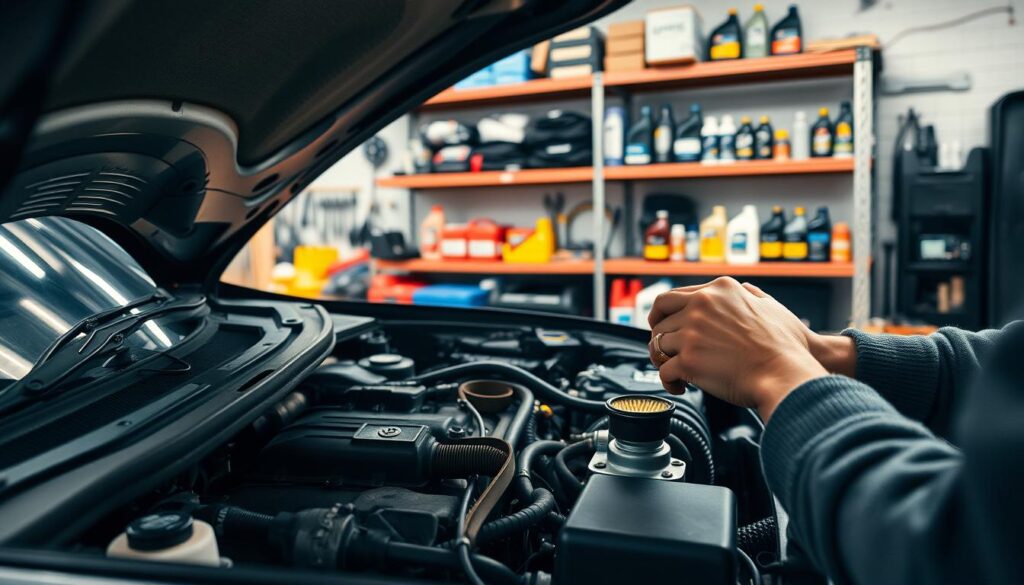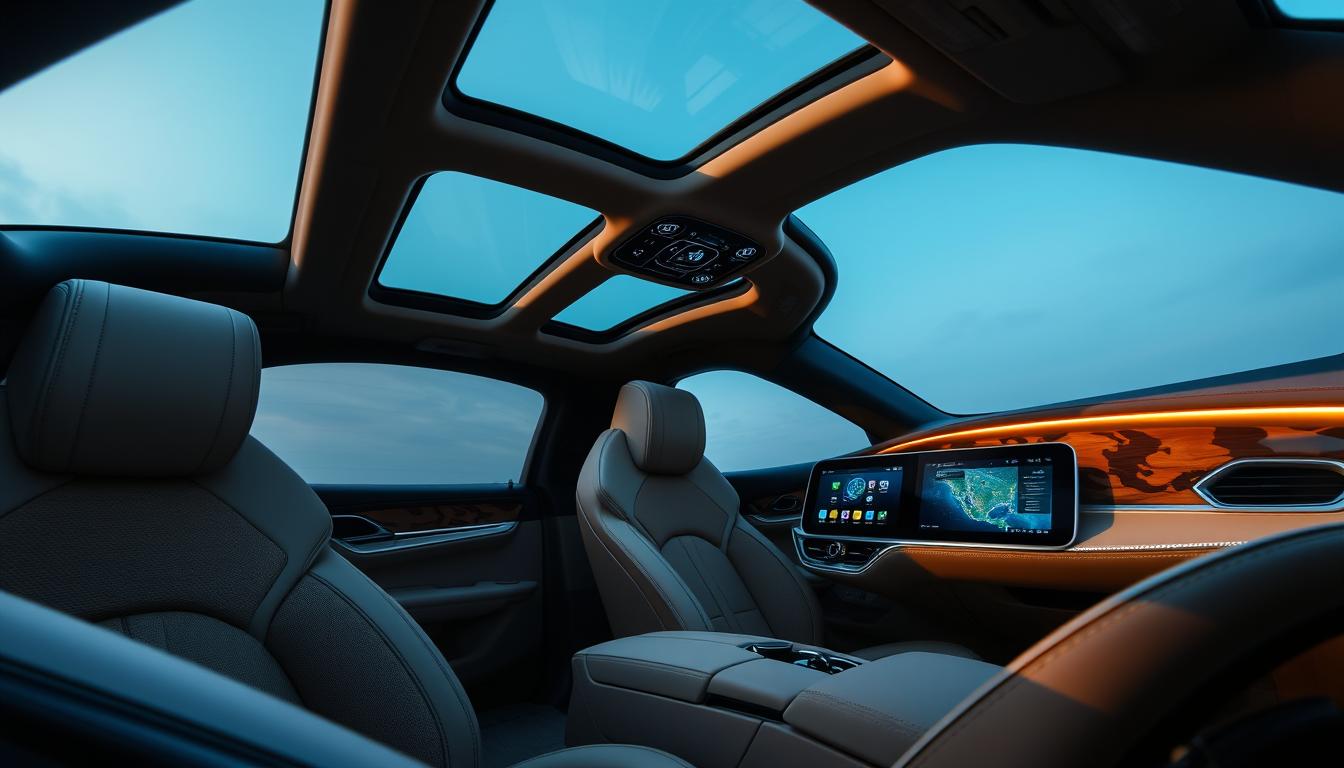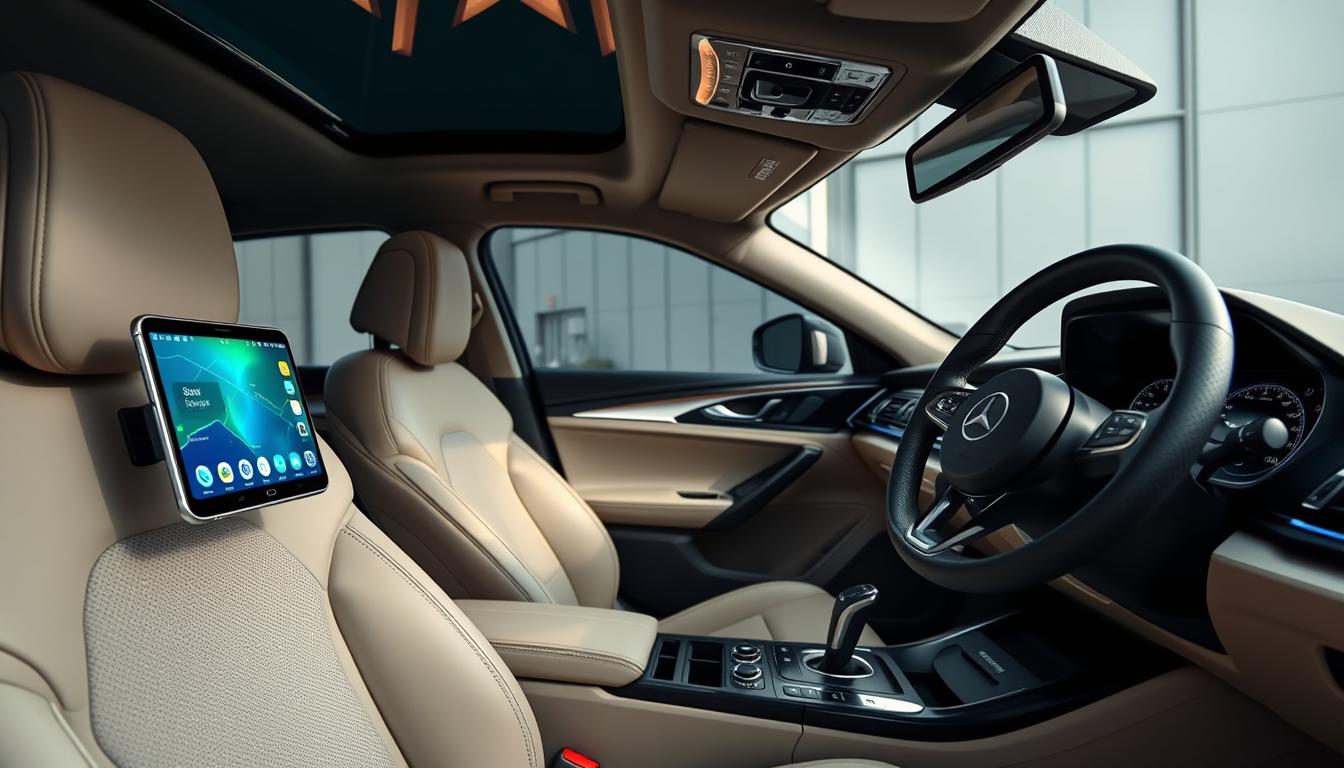Did you know that most drivers never come close to reaching their vehicle’s optimal fuel efficiency? With the rising costs of gas, maximizing your car’s economy is more important than ever.
We can significantly improve our vehicle’s efficiency by focusing on two key areas: our driving habits and car maintenance. By making a few simple adjustments to how we drive and ensuring our vehicle is well-maintained, we can get the most out of every tank of gas.
We’ll explore practical ways to enhance your car’s fuel efficiency, saving you hundreds of dollars annually.
Key Takeaways
- Understand the impact of driving habits on fuel consumption.
- Learn simple driving techniques to improve fuel economy.
- Discover the importance of regular vehicle maintenance.
- Implement actionable tips to see immediate improvements.
- Maximize your vehicle’s performance and fuel efficiency.
Why Fuel Efficiency Matters
Enhancing fuel efficiency is a straightforward way to lower fuel consumption and reduce emissions. By doing so, we not only save money on fuel costs but also contribute to a cleaner environment.
The Economic Benefits of Better Fuel Economy
Improving your vehicle’s fuel economy can lead to significant financial savings over time. With fluctuating gas prices, adopting fuel-efficient driving techniques can save the average driver hundreds of dollars annually. For a detailed guide on comparing vehicles and their fuel efficiencies, you can refer to our detailed car comparison guide. This not only helps in making informed decisions but also justifies changes to driving habits and maintenance routines.
Environmental Impact of Improved Fuel Efficiency
Beyond the economic benefits, fuel efficiency plays a critical role in reducing our environmental impact. Every gallon of gas burned produces about 20 pounds of CO2, making fuel efficiency an important consideration for reducing carbon emissions. By reducing fuel consumption, we conserve natural resources and decrease our dependence on fossil fuels, contributing to improved air quality and climate change mitigation.
Essential Tips for Improving Your Car’s Fuel Efficiency
Simple adjustments to your driving style can significantly impact your car’s fuel efficiency, saving you money and reducing emissions. By implementing a few straightforward changes, you can enhance your vehicle’s performance and contribute to a more sustainable environment.
Maintain a Steady Speed and Use Cruise Control
Maintaining a steady speed is one of the most effective ways to improve fuel efficiency. When your speed dips and bursts, you use more fuel than necessary. Tests have shown that varying your speed between 75 and 85 km per hour every 18 seconds can increase your fuel use by up to 20%. Consider using cruise control for highway driving, where conditions permit, to maintain consistent speeds and significantly improve your gas mileage on long trips.

Practice Gentle Acceleration and Braking
Aggressive driving with rapid acceleration and hard braking can reduce fuel economy by as much as 40% in city traffic. Practicing gentle acceleration and braking not only improves fuel efficiency but also reduces wear on your vehicle. The “coffee cup” visualization technique can help drivers practice smooth, gentle acceleration that preserves fuel.
- Gentle acceleration reduces fuel consumption.
- Smooth braking decreases wear on brake pads.
- Avoiding hard stops improves overall fuel economy.
Observe Speed Limits for Optimal Efficiency
Most vehicles achieve optimal fuel efficiency between 50-60 mph. Efficiency decreases dramatically at higher speeds. Reducing highway speed by just 5-10 mph can improve fuel economy by up to 14%. Observing speed limits not only saves fuel but also enhances safety on the road.
Coast to Decelerate and Anticipate Traffic Flow
Learning to anticipate traffic patterns allows you to maintain momentum and avoid unnecessary braking, which wastes energy. The coasting technique, where you take your foot off the accelerator early when approaching stops, can significantly reduce fuel consumption. Looking far ahead while driving helps you time traffic lights and maintain a steady pace, reducing the fuel-intensive stop-and-go cycle.
Vehicle Maintenance for Maximum Fuel Economy
To maximize your car’s fuel economy, it’s essential to focus on regular vehicle maintenance. Proper maintenance not only improves fuel efficiency but also extends the overall lifespan of your vehicle, providing additional long-term savings.

Regular Tire Pressure Checks
Maintaining the correct tire pressure is critical for fuel efficiency. Driving a vehicle with tires under-inflated by 56 kilopascals (8 pounds per square inch) can increase fuel consumption by up to 4%. It can also reduce the life of your tires by more than 10,000 kilometers. We recommend checking tire pressure monthly, as tires naturally lose about 1 PSI per month. Ensure you check the pressure when tires are cold for accurate readings. The right tire pressure for your vehicle can be found on the tire information placard, usually located on the edge of the driver’s door or doorpost.
Timely Oil Changes and Engine Maintenance
Regular oil changes are vital for keeping your engine running smoothly and efficiently. Modern vehicles typically require oil changes every 7,500 to 10,000 miles. Using the right type of oil and changing it on time can significantly impact your car’s fuel economy and engine longevity. A well-maintained engine is essential for optimal fuel efficiency.
Replace Air Filters and Address Check Engine Lights
Dirty engine air filters can restrict airflow and significantly reduce fuel economy, especially in older vehicles. Replacing air filters regularly can help maintain optimal engine performance. Additionally, if your check engine light comes on, it’s crucial to address the issue promptly. This light often indicates problems that can affect fuel efficiency, and ignoring it can lead to worsened mileage and more expensive repairs later.
Track Your Fuel Economy to Spot Problems Early
Tracking your fuel economy over time helps identify potential issues before they become serious problems. A simple way to calculate your actual MPG is by dividing the miles driven by the gallons used between fill-ups. Monitoring your fuel economy regularly allows you to catch any deviations from the norm early, enabling you to take corrective action.
By following these maintenance tips, you can significantly improve your vehicle’s fuel economy and overall performance. Regular maintenance is key to ensuring your car runs efficiently and effectively, saving you money in the long run.
By incorporating a few easy adjustments into your daily routine, you can improve your car’s fuel economy. These changes not only save you money on gas but also contribute to a more environmentally friendly driving practice.
Reduce Vehicle Weight by Removing Unnecessary Items
Removing unnecessary items from your vehicle can significantly improve its fuel efficiency. For every 25 kilograms of extra weight, a mid-size car’s fuel consumption increases by about 1%. This means that carrying around unnecessary items such as sports equipment or sand can lead to increased fuel consumption.
Regularly cleaning out your car can make a noticeable difference.
Improve Aerodynamics by Removing Roof Racks
Roof racks and carriers can create significant aerodynamic drag, reducing fuel efficiency by up to 20% on highways, even when empty. For instance, a car with a rooftop bike rack can lose up to 13 MPG compared to the same vehicle without the rack.
Removing roof racks when not in use can help mitigate this issue.
Plan Trips to Combine Errands and Avoid Rush Hour
Planning your trips efficiently can also save gas. Combining multiple errands into a single trip reduces the number of cold starts, which are fuel-intensive.
Additionally, avoiding rush hour can significantly decrease the amount of time spent in stop-and-go traffic, thereby reducing fuel consumption. For more tips on fuel-efficient driving techniques, you can visit the Natural Resources Canada website.
Smart Use of Air Conditioning and Heating
The use of air conditioning and heating can impact your vehicle’s fuel efficiency. Using the recirculation setting when air conditioning is necessary can reduce the energy needed to cool your car.
It’s also worth noting that the most fuel-efficient approach to climate control varies by season and driving conditions.
| Driving Condition | Fuel-Efficient Choice |
|---|---|
| Highway driving | Using air conditioning is generally more efficient than open windows |
| City driving | Rolling down windows might be more efficient than using air conditioning |
| Hot weather | Use recirculation with air conditioning to reduce energy consumption |

By implementing these lifestyle changes, you can make a substantial difference in your vehicle’s fuel consumption. These adjustments require minimal effort but can collectively lead to significant savings on gas.
Conclusion: Small Changes for Big Savings
Enhancing your vehicle’s fuel efficiency not only saves you money but also benefits the environment. By implementing the strategies outlined in this article, such as maintaining a steady speed, practicing gentle acceleration, and keeping your vehicle well-maintained, you can significantly improve your fuel economy.
The cumulative effect of these changes can improve your overall fuel efficiency by up to 25%. We encourage you to start with the easiest changes first and gradually adopt more fuel-efficient habits. Tracking your progress by monitoring your fuel consumption before and after implementing these changes will provide tangible evidence of improvement.
For personalized advice on improving your specific vehicle’s fuel efficiency, feel free to contact us via WhatsApp at +44-7822010953. By making these small changes, you’ll not only save money on gas but also contribute to a more sustainable environment and extend the lifespan of your vehicle.


